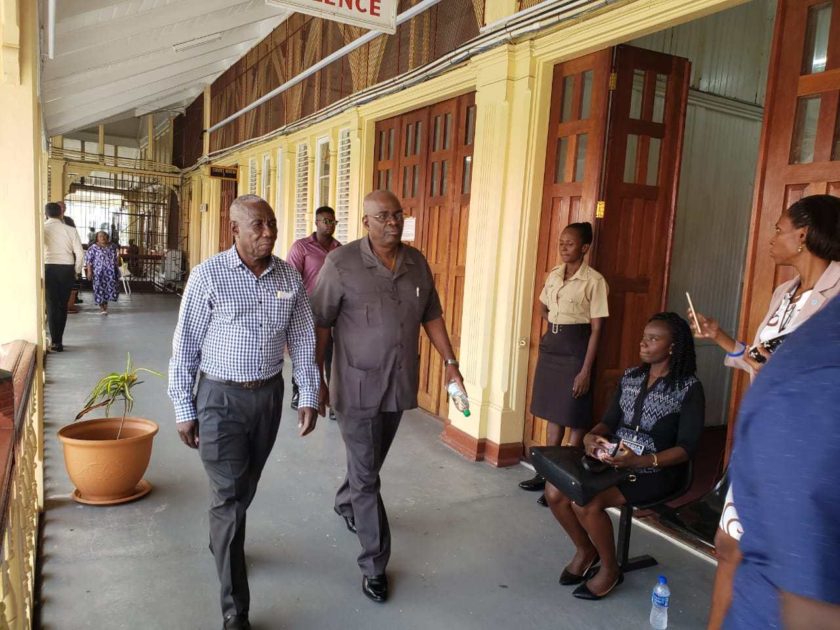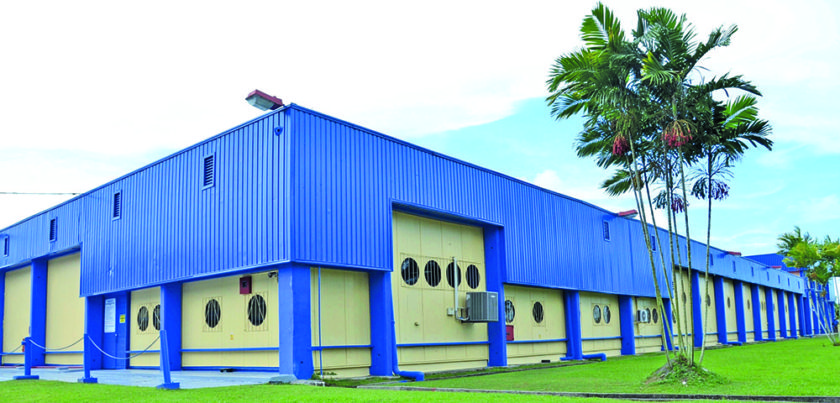As Guyana prepares to become an oil-producing nation, the discovery of what is commonly known as black gold has been unprecedented, so much so that most of the offshore oil explorations have been successful with just a few disappointments.
This point was underscored by Senior Director, Public and Government Affairs at ExxonMobil, Kimberly Brasington, who told Guyana Times International in an exclusive interview on Tuesday that this speaks well for a country where there is limited information and data that would inspire exploration.

ExxonMobil has so far experienced great exploration success in Guyana with seven previous discoveries: Liza, Liza Deep, Payara, Pacora, Snoek, Ranger, and Turbot. The company also plans to drill a new well dubbed Long Tail, which has the possibility of becoming a new prospecting area also.
“We’ve drilled 13 wells to date and 11 of them would have been successful and then we had the two dry holes,” Brasington said. She was referring to the Soribrum well, which failed to encounter commercial quantities of hydrocarbons during drilling last week and SkipJack-1 in September 2016.
Brasington said in the oil exploration business, the percentage of success is one in every five, or one in every 10 wells drilled, but in the case of Guyana, the successes have far outweighed the failures. “In best cases, one in five is what we see around the world success rate, and here we are, 11 out of 13 wells where we have encountered hydrocarbons. So, I guess that’s an important point to make,” she added.
The ExxonMobil official also noted that with more discoveries, there is now a greater chance for Guyana to earn more, as the initial prediction was that 100,000 barrels of oil could be produced each day, but that figure has increased a bit based on new discoveries that the company has announced.
According to Brasington, it was estimated that for Liza Phase One, that well would produce 100,000 to 120,000 barrels of oil per day, which in essence meant that every nine days it would produce one million barrels. Liza Phase Two is expected to produce double that which will take it to 220,000 barrels per day.
“So, if you have Liza Phase Two comes on stream around 2022, which is the estimate…so in 2022, you have phase one and phase two both producing, you’ll have around 350,000 barrels being produced per day. And then we start talking publicly about boat number three, which would potentially produce for Payara and Pacora…that’s a bit hypothetical, but it comes on around 2024…so it just continues to increase.”
However, Brasington explained that several things would have to take place in order for that to happen, which means the company would have to discover that the oil was there and give the best estimate on what it thought was there. The development option will finally determine the amount of barrels per day.
The Stena Carron is currently drilling the Liza 5 well, which will likely be followed by Long Tail.
The Stabroek Block is 6.6 million acres. Esso Exploration and Production Guyana Limited is the operator, and holds a 45 per cent interest in the Stabroek Block. Hess Guyana Exploration Ltd, Hess Corporation’s subsidiary, holds a 30 per cent interest, and CNOOC Nexen Petroleum Guyana Limited holds a 25 per cent interest.
Since ExxonMobil’s 2015 oil find, Guyana has attracted international attention and precipitated intense sensitisation exercises. In May 2015, Exxon confirmed that more than 295 feet of high-quality, oil-bearing sandstone reservoirs were encountered at its Liza 1 exploration well.
In late June 2016, Exxon’s drilling results at Liza 2 revealed more than 58 metres of oil-bearing sandstone reservoirs in Upper Cretaceous formations.The well was drilled to 5475 metres at 1692 metres water depth. Drilling results confirmed recoverable resources to be between 800 million and 1.4 billion barrels of oil equivalent.
The company had announced that it made its third significant discovery in its drilling explorations offshore Guyana. Its partner, Hess Corporation, had noted that the Liza 3 exploratory well’s net value could be US$6.2 billion, based on calculations from the Bank of Montreal (BMO) Capital Markets.
Drilling on Payara began on November 12, 2016, with initial total depth reached on December 2, 2016. In January of 2017, the oil giant announced it had struck some 95 feet of oil reservoirs in its Payara-1 well, targeting the same type of reservoirs as the well’s Liza counterpart.
Oil was discovered in the Turbot-1 well in October of 2017. According to the oil company, following the discovery, the well reservoir was 75 feet deep. Drilling has been ongoing at the Turbot well since August 2017.
More oil was found at the Pacora-1 drill site, some 107 miles from the coast of Guyana. This would be the seventh major find by Exxon since May 2015. It is understood that additional exploration drilling is planned on the Stabroek Block for 2018, including potential appraisal drilling at the Ranger discovery.
ExxonMobil Guyana, as operator, in partnership with Hess and CNOOC Nexen, has discovered more than 3.2 billion barrels of recoverable oil in the 6.6 million-acre Stabroek Block.
Guyana will officially begin oil production in 2020.



